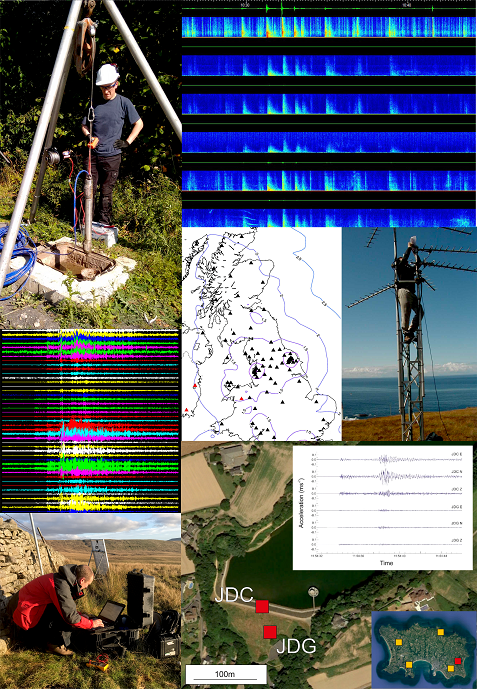The UK's earthquake detection network
The UK's earthquake detection network: nationwide seismic monitoring & site-specific examples at dams & power stations
Synopsis

To engineers with an interest in earthquakes there are a number of advantages in continually and accurately monitoring seismic activity in the UK. Monitoring is an integral part of the way we predict seismic hazard over a desired period. If there is an earthquake it allows us to assess whether intensity measures, like peak ground acceleration, are problematic at a location in terms of an engineered structure. If working on ground motion prediction equations it allows our models to be tested. If engaged in an activity that causes earthquakes (dam impoundment, fracking, geothermal energy, deep waste water disposal etc.) it allows the effects of such behaviour to be discriminated from background activity. Where an industrial activity is suspected of causing tremors it can allow such claims to be verified or dismissed.
However, this talk does not focus on what we do with earthquake data, but how we get that data in the UK. This presentation outlines the types of seismic stations operated in the UK, how data is handled and some of the pitfalls and problems of running a network that has been operational since 1969. As well as maintaining its own network of sensors the BGS runs seismic stations on behalf of a number of companies across the UK. These are typically to provide absolute measurements of ground motion during an earthquake and are installed at dams and power stations. In some cases these stations aid site specific characterization in advance of major civil engineering projects. The design and use of these site specific monitoring stations will be discussed in detail, including how the data from such stations is combined with the wider BGS network to enhance the functionality of the data.
About the speaker
Dr David Hawthorn is a seismologist with the British Geological Survey (BGS) and has worked as a geophysicist since 2003. He initially worked in the private sector carrying out ground penetrating radar surveys of engineered structures such as roads, bridges and tunnels. He moved into academia in 2007, working in UKRI's SEIS-UK facility at the University of Leicester. There he supported a variety of projects including global tomography, volcanic studies, landslide investigations, iceberg and glacial behaviour, crustal structure investigations and quantifying seal mating behaviour. He moved to the BGS in 2015. He has extensive experience of the deployment and management of passive seismic networks, which he has done in environments as diverse as the Yemeni desert and central Icelandic. His work has included rapid deployments of seismic networks in the immediate aftermath of damaging earthquakes in Italy (2016, Umbria, 6.6Mw), Chile (2010, Maule, 8.8Mw) and Indonesia (2009, Sumatra, 7.6Mw). At BGS his work is primarily, but not solely, focused on running the UK's network of around 100 seismic stations.
Join online
This lecture will take place online via Microsoft Teams*. A link to the event is provided below. Please ensure that you mute your microphone and turn of your camera prior to joining the event.
Further information
The meeting will be chaired by Stavroula Kontoe (Imperial College). Non-members of the society are welcome to attend. Attendance at the meeting is free.
* Microsoft Teams is freely available on all major platforms, including Windows, Linux, MacOS, Android and iOS. To download and install the software, follow this link. SECED is not sponsored by or otherwise affiliated with Microsoft, and we do not endorse any Microsoft products.
Event Details
| Event Date | 30/09/2020 6:00 pm |
